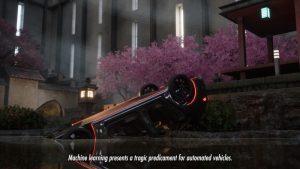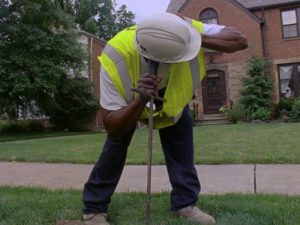Douglas Bagnall‘s Filmmaking Robot can edit short films. The computer software programme can select from a range of video footage, and even has an in-built ability to make aesthetic decisions. The robot is programmed to “get bored” and it endlessly shifts its decision-making, choosing footage based purely on the colour blue, for example, or focussing on people and movement.

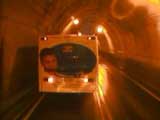
Of course, being a computer programme, the robot can’t move around the city to gather images. Instead, small cameras are hosted on the front of buses. The camera records as the bus travels around and transmits video snippets to the body when the bus comes within range of a wifi node.
Inside the gallery space is a projection of its editing, and on a separate screen are finished films which it completes nightly. Video received from the eyes is split into frames, which are analysed and stored. The output of the robot is made from arrangements frames and false memories that the robot forms from its favourite images.
 The robot lives in a cave and only sees the shadows of images of the real world. The shadows look like numbers
The robot lives in a cave and only sees the shadows of images of the real world. The shadows look like numbers
Each frame is analysed to give 20 numbers summarising its qualities, and these numbers are treated as coordinates in a 20 dimensional space. Proximity in this space is used to determine similarity for the purposes of creating a video sequence. These numbers are also feed to neural networks which have been trained to like selections of fine art and images identified as well-composed by human subjects, and the response of these networks determines whether the robot likes an image.
At the end of the day, it looks over its production, and picks out a few minutes to release as a finished film.
Related: Dokumat 500.
Part of ISEA 2006, August 5-13, San José.

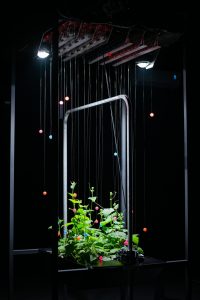
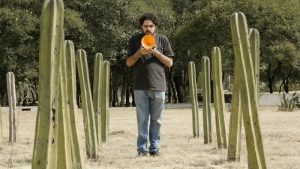
![7 art and tech ideas I discovered at Meta.Morf 2024 – [up]Loaded Bodies 7 art and tech ideas I discovered at Meta.Morf 2024 – [up]Loaded Bodies](https://we-make-money-not-art.com/wp-content/uploads/2024/05/53705969154_73dfdfea6f_c-300x200.jpeg)
